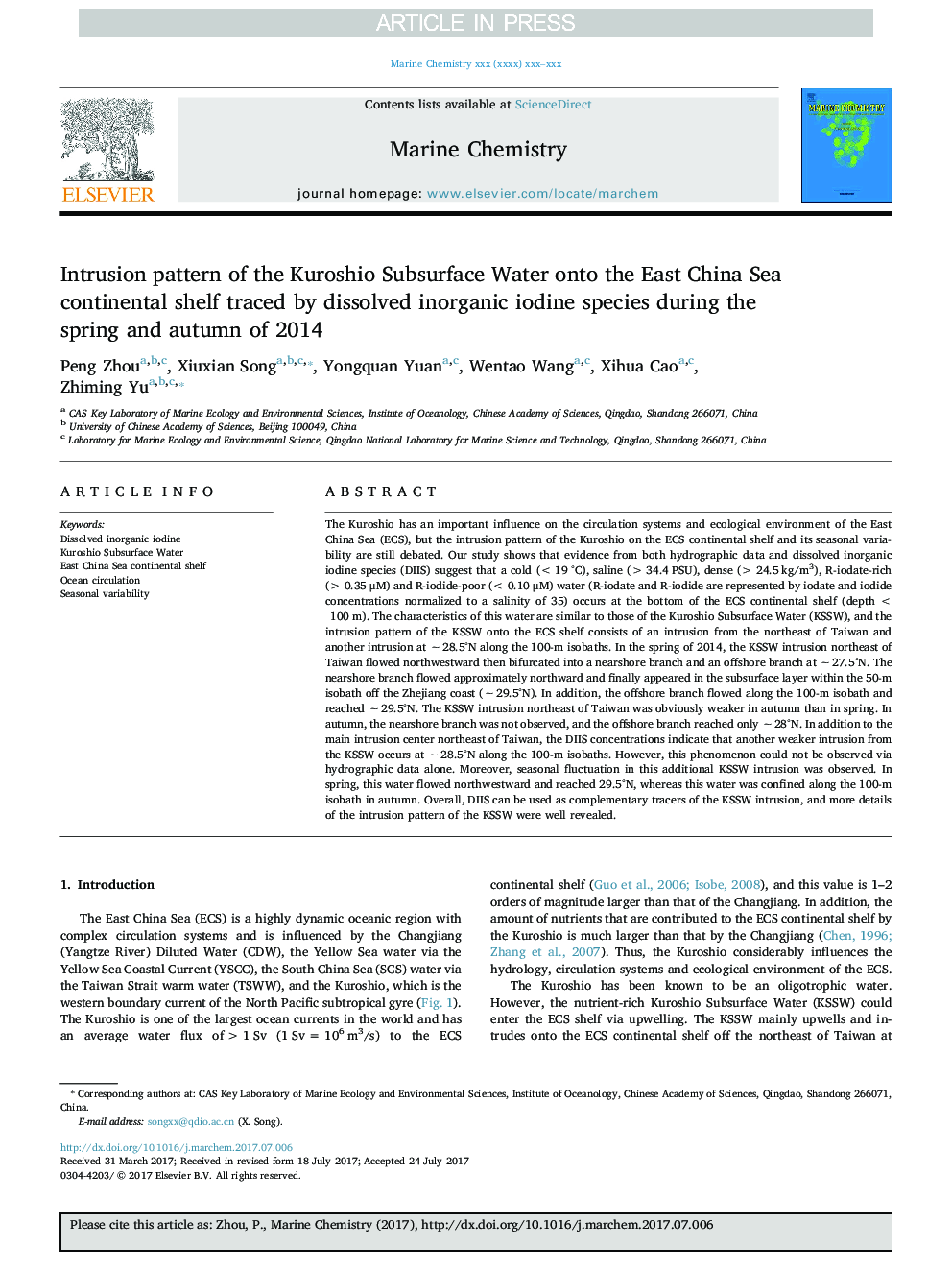| Article ID | Journal | Published Year | Pages | File Type |
|---|---|---|---|---|
| 7698983 | Marine Chemistry | 2017 | 11 Pages |
Abstract
The Kuroshio has an important influence on the circulation systems and ecological environment of the East China Sea (ECS), but the intrusion pattern of the Kuroshio on the ECS continental shelf and its seasonal variability are still debated. Our study shows that evidence from both hydrographic data and dissolved inorganic iodine species (DIIS) suggest that a cold (< 19 °C), saline (> 34.4 PSU), dense (> 24.5 kg/m3), R-iodate-rich (> 0.35 μM) and R-iodide-poor (< 0.10 μM) water (R-iodate and R-iodide are represented by iodate and iodide concentrations normalized to a salinity of 35) occurs at the bottom of the ECS continental shelf (depth < 100 m). The characteristics of this water are similar to those of the Kuroshio Subsurface Water (KSSW), and the intrusion pattern of the KSSW onto the ECS shelf consists of an intrusion from the northeast of Taiwan and another intrusion at â¼Â 28.5°N along the 100-m isobaths. In the spring of 2014, the KSSW intrusion northeast of Taiwan flowed northwestward then bifurcated into a nearshore branch and an offshore branch at â¼Â 27.5°N. The nearshore branch flowed approximately northward and finally appeared in the subsurface layer within the 50-m isobath off the Zhejiang coast (â¼Â 29.5°N). In addition, the offshore branch flowed along the 100-m isobath and reached â¼Â 29.5°N. The KSSW intrusion northeast of Taiwan was obviously weaker in autumn than in spring. In autumn, the nearshore branch was not observed, and the offshore branch reached only â¼Â 28°N. In addition to the main intrusion center northeast of Taiwan, the DIIS concentrations indicate that another weaker intrusion from the KSSW occurs at â¼Â 28.5°N along the 100-m isobaths. However, this phenomenon could not be observed via hydrographic data alone. Moreover, seasonal fluctuation in this additional KSSW intrusion was observed. In spring, this water flowed northwestward and reached 29.5°N, whereas this water was confined along the 100-m isobath in autumn. Overall, DIIS can be used as complementary tracers of the KSSW intrusion, and more details of the intrusion pattern of the KSSW were well revealed.
Related Topics
Physical Sciences and Engineering
Chemistry
Chemistry (General)
Authors
Peng Zhou, Xiuxian Song, Yongquan Yuan, Wentao Wang, Xihua Cao, Zhiming Yu,
